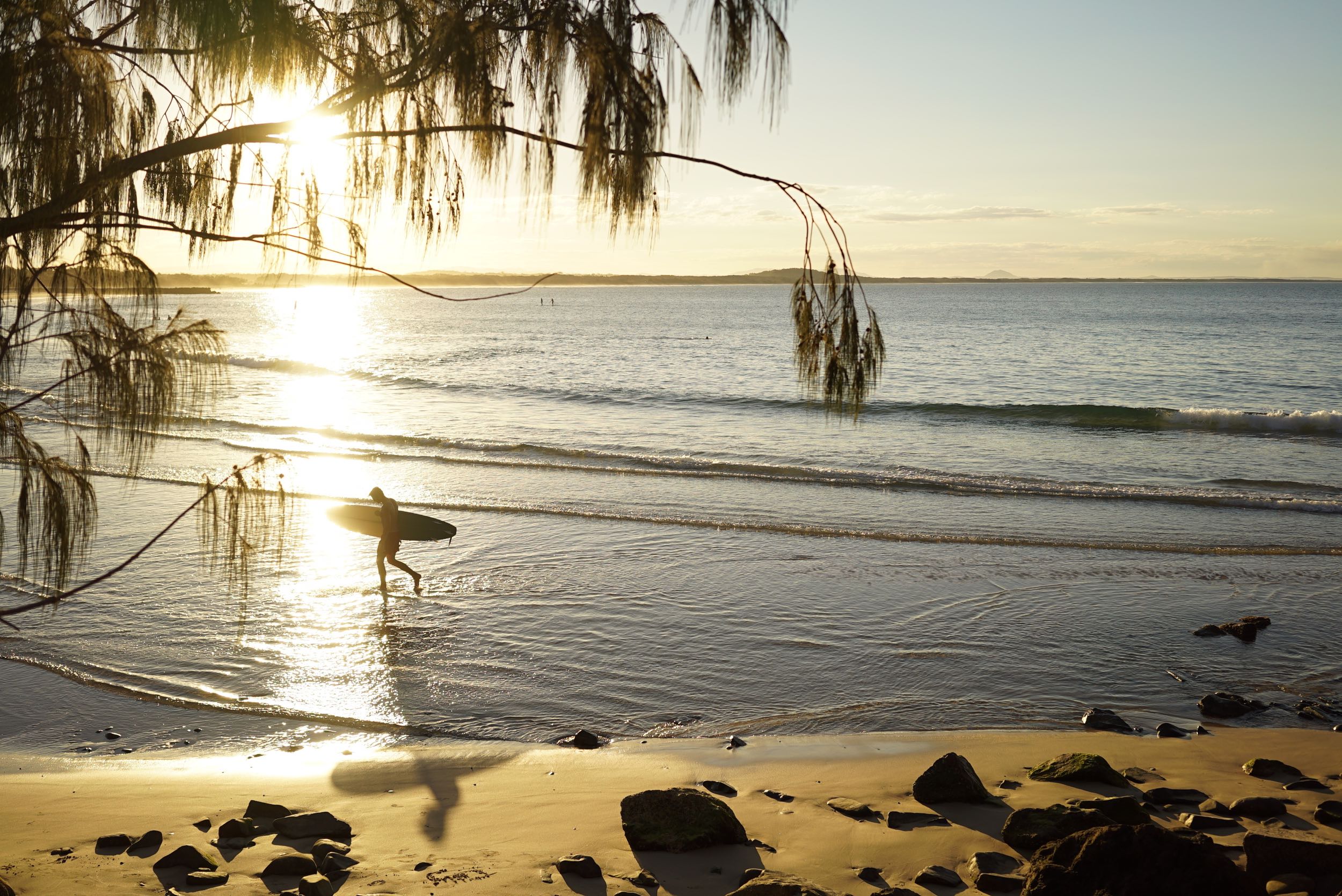Preserving Noosa’s Surfing Heritage
The Noosa World Surfing Reserve, established as part of a global initiative led by the Save The Waves Coalition, National Surfing Reserves Australia, and the International Surfing Association, aims to protect and celebrate the world’s outstanding surf zones and their surrounding environments. Stretching from Laguna Bay to North Sunshine Beach, this reserve embodies a commitment to coastal management and environmental stewardship, a legacy initiated by local conservation efforts since 1962. The reserve not only safeguards Noosa’s iconic point breaks but also underscores the community’s ongoing dedication to preserving its unique surfing culture and coastal beauty, adding an essential layer of protection to its revered surf breaks.
Surfing is more than just Main Beach
While Noosa is held dear in the eyes of tourists, the same feeling is held in the hearts of surfers who flock here every year due to its surf culture. Surfing used to be bound to Noosa Main Beach, but once surfers began exploring the area, they found endless waves; they formed a community which has subsequently led to Noosa being named as part of the World’s Surfing Reserve in March of 2017.
Protect the Waves
The surfing community within Noosa has done its due diligence, protecting the waves and environment through efforts to minimise coastal development and looking after Noosa National Park. Noosa was selected as the 10th World Surfing Reserve by Save the Waves, an organisation dedicated to preserving some of the best surf breaks in the world.
Point Breaks
Noosa consists of several point breaks, including First Point and Likewise Johnsons, also known as “Little Cove“. Breaks like these are ideal for those learning to surf but proceed cautiously as they sit on shallow sand breaks that can create a heavy, hollow wave during low tide.
Granite and Tea Tree Bay
The preservation of the environment in the area has assisted Noosa in becoming a world-class surf reserve. Three of Noosa’s most prestigious waves are within the national park itself. These breaks include Boiling Pot, Granite Bay, and Tea Tree Bay and can provide something for all surfers. Generations of surfers have played a large part in proudly protecting these areas of Noosa National Park.
Surfing Season
The surfing season is best from December to May, which coincides with the cyclone season, but you will generally find something to surf there year-round. However, the region can experience “dry” swells during late winter or early spring. In March, the Noosa Festival of Surfing takes place every year, bringing surfers worldwide to this special destination. Whether you’re an avid surfer or an admirer of its culture, travelling to Noosa means travelling to the heart of vibrant surf culture, which has grown over generations.

